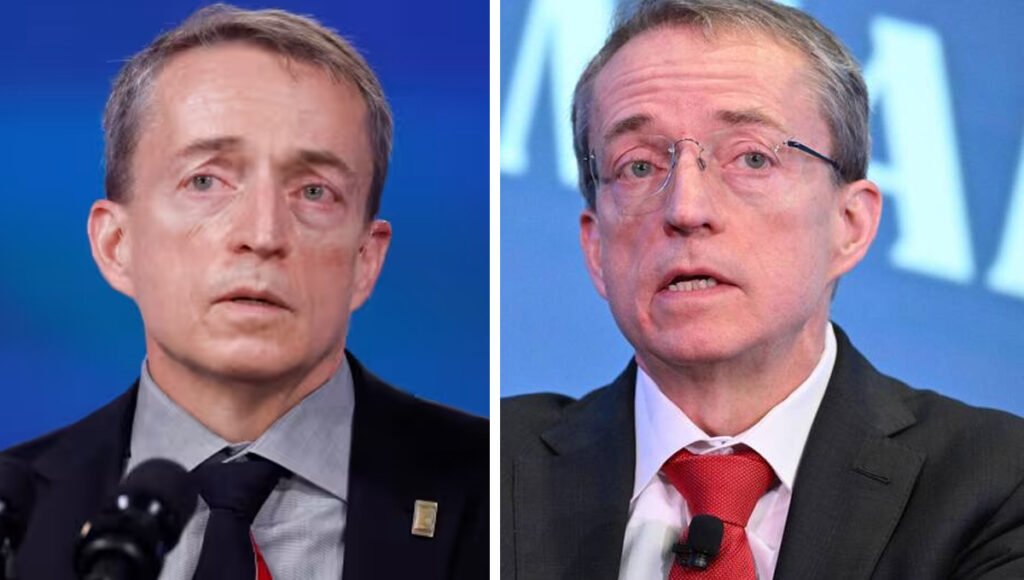On December 1, 2024, Intel Corporation, the venerable American electronics business, shockingly declared Respected CEO Pat Gelsinger, who joined the business in 2021, left to negotiate a fast changing digital scene. Intel missed important technology trends and saw its stock value collapse under his direction, trying to restore its competitive edge.
Pat Gelsinger’s leaving signals a turning moment in Intel’s history and begs a lot of issues regarding the company’s future orientation. Let’s examine Gelsinger’s tenure, Intel’s difficulties, and the possible future course for once-mighty technological behemoth more closely.
Tenure of Pat Gelsinger at Intel: A Story of Trials and Setbacks
Pat Gelsinger is whom? A Synopsis of His Profession
Pat Gelsinger’s Intel career has been everything from conventional. Gelsinger departed Intel to become the CEO of VMware, a top software business, after decades of service at the corporation including a significant position as the Chief Technology Officer (CTO). But he returned to Intel as CEO in 2021 with the difficult responsibility of restoring a business faltering to keep its grasp in a fast changing market.
Gelsinger’s Intel Goals and Expectations
Intel was already dealing with a lot of difficulties when Gelsinger replaced its CEO: competition from rivals like AMD and Nvidia, manufacturing delays, and a general inability to keep up with the rising demand for innovative chip technologies. His main goals were obviously to revive Intel’s manufacturing capacity, take leadership in chip technologies, and steady the company’s financial situation.
Gelsinger’s Early Years of Leadership
Gelsinger’s leadership first attracted hope. To help Intel’s position in the worldwide chip industry, he promised to commit in additional manufacturing capability and get government support. But as the months went by, Intel’s problems became more clear-cut, and Gelsinger’s high aspirations began to wane.
Intel’s Challenges: A Changing Technological Scene
A Key Turning Point: The Missed Opportunity in AI
Intel’s inability to profit on the fast expanding field of artificial intelligence (AI) was one of the most major obstacles Gelsinger’s presidency presented. Intel was left rushing to catch up as OpenAI’s ChatGPT, which transformed the artificial intelligence sector, rolled out in 2023 Former rival of Intel, Nvidia embraced artificial intelligence early on and saw its stock rise astonishingly 720% over two years.
Strategic emphasis on AI-powered chips for data centers by Nvidia helped it to rise to be among the most valuable firms in the world, surpassing Intel. Under Gelsinger’s direction, Intel wasted a big chance as its core chip business faltered and it struggled to establish a firm footing in artificial intelligence technologies.
Decline in Intel’s Stock Price
Intel’s stock value dropped dramatically under Gelsinger’s direction as CEO. Intel’s stock fell 61% since it was clear the firm had fallen behind the most recent technological advancements. Intel’s stock continues to suffer, indicating investor worries about the company’s future even with billions of government money to support its domestic manufacturing initiatives.
Challenges in Manufacturing and Talent Retention
Apart from the battle with artificial intelligence, Intel also had major difficulties in its production processes. Production delays dogged the firm, and the loss of top people severely compromised its capacity for innovation. Although Gelsinger tried to reorganize the business and simplify processes, the fundamental problems of the corporation stayed unmet.
Gelsinger’s Last Days at Intel: Changing Leadership
The Declared Resignation of Gelsinger
Intel decided to split from CEO Pat Gelsinger on December 1, 2024, citing the need of fresh leadership. Following a string of difficult choices involving major layoffs and a review of Intel’s manufacturing approach, his resignation followed Gelsinger reportedly will be leaving his post, and interim co-CEOs David Zinser and Michelle (MJ) Johnston Holthaus will take over.
The Near Instant Effects of Gelsinger’s Resignation
Early trading of Intel’s stock showed a meager 3% increase after Gelsinger’s resignation, implying that investors were hoping for a fresh path under the temporary leadership. Intel still has a long journey ahead, though, given many obstacles include changing its business strategy and competing with companies like Nvidia and TSMC.
What Next for the Tech Giant Intel?
Intel’s Next Chapter: The Hunt for a New CEO
Intel started looking for a permanent CEO after Gelsinger’s leaving. Someone who can negotiate the complexity of the worldwide semiconductor market, oversee Intel’s production activities, and restore the company’s tech sector leadership will be sought for.
The Part Co-CEOs David Zinsner and Michelle Holthaus Play
Intel will be under direction in the interim from co-CEOs Michelle Holthaus, General Manager of Intel’s Client Computing Group, and David Zinsner, Intel’s Chief Financial Officer. Both leaders will cooperate to guide Intel through this change phase; they have a lot of corporate expertise. Particularly Holthaus has been assigned to the recently appointed CEO of Intel Products, supervising important areas such data center and AI product development.
Intel’s Turn Towards Manufacturing for Rivals
Intel is daring in changing its business strategy to manufacture processors for other computer behemoths like Apple. It does, however, directly compete with industry titans like Taiwan Semiconductor Manufacturing Company (TSMC), therefore endangering the company. Intel’s attempt to hold a sizable share in the worldwide foundry market will call both large capital expenditure and a long-term dedication to R&D.
Will Intel Outperform in the AI Race?
Intel’s failure to find footing offers a chance for the firm to re-enter the race given the rising demand for artificial intelligence chips. Intel will have to move quickly, though, to catch up with rivals such Nvidia. Still unresolved is whether Intel can use its manufacturing capabilities to be major player in the AI transformation.

